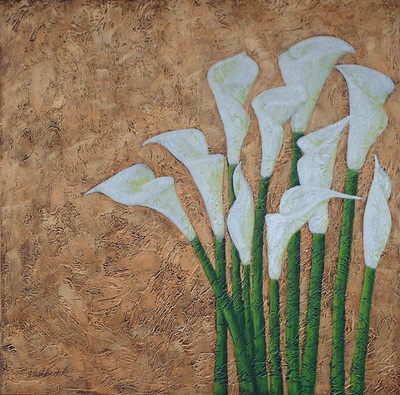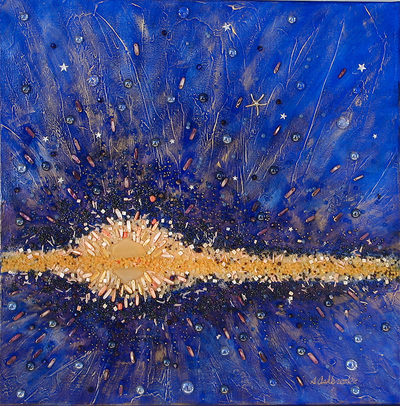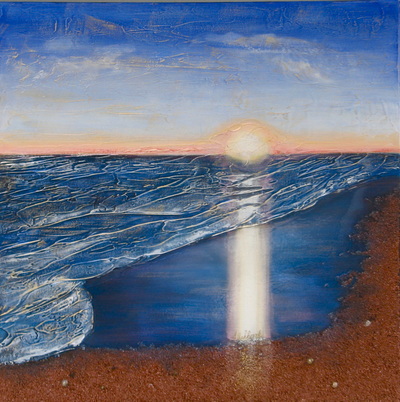Well, it's official now... on Tuesday I signed a contract with the Kevin Dodds Gallery (KDG), and my work will be exhibited there starting September 1.
The gallery is at 1101 Bank Street, in Ottawa, which is just south of Sunnyside Avenue. It's a charming little gallery and, as I'm finding out, it is quite well known. One of the things that attracted me to it was the work of the artists... contemporary with a wide variety of mediums and styles... not the basic traditional work that one finds in many galleries. As an "Artistic Explorer" this appealed to me. If you like my work you will enjoy the work on exhibit. Some of my clients are also big enthusiasts of the KDG, which seems to bode well for a good relationship! See more at kevindoddsart.com/.
So Wednesday I spent the day sorting through paintings to select for the gallery, then checking them out to make sure there were no scuff marks on corners and that they were properly varnished. Some had not been varnished, which prompted a rush trip to the art store for a supply of varnish, but they are all done and ready to go now. Whew!
I will also be teaching at the KDG and am in the process of setting up classes and workshops for the fall session... more to come on that next week!
In the meantime, I have my fall class lineup now on my website www.susanashbrook.com. Please see if there is there is anything you are interested in and let me know. Classes are already starting to fill up.
Painting Tip: A 3-Step Method for Strong Art Compositions
This wonderful information was shared by Ian Roberts, through Cherie Haas at F+W Media, ([email protected]) and can take you from copying photos verbatim, to becoming a really creative artist making phenomenal paintings.
By the way, Ian's book "Mastering Composition" is a fantastic resource on the subject of composition. His explanations make a lot of sense and are easy to understand! It is available through Chapters, Amazon and North Light Books.
1. Cropping
Study your photo to see how many elements and details you can cut out so only the most salient masses remain. (Digital photo programs all have cropping tools.) Everything else is filler and dilutes the impact of your painting. You need to be ruthless in cropping, asking yourself whether your photo will translate into a painting. Going ahead with a questionable design–thinking you’ll figure it out later as you paint–becomes a low-success-rate proposition and leads to frustration.
2. Drawing a Road Map
This road map isn’t a sketch of the scene; it shows the main horizontal and vertical thrusts of the design on the picture plane. in a landscape the horizon automatically creates a horizontal tension engaging the two sides of the painting, but you need a vertical tension engaging the top and bottom as well to connect and energize the entire picture plane. You also need a few major value masses to fill that picture plane, some big, some small. Most of the photos I end up using I take in the early morning or late evening, when the shapes of light and dark are more dramatic. That’s also when I paint outdoors, for the same reason.
The road map also helps determine the path you want the viewer’s eye to take through the painting. Often the center of interest falls at the intersection of the main horizontal and vertical. As you paint, the map reminds you where you’re going and when you get there–in other words, when to stop.
3. Simplifying
Knowing the path you want the viewer’s eye to take through the painting allows you to simplify more easily. You definitely don’t want to just copy your photo. The art comes from extracting and emphasizing the gist of the scene. You can eliminate the rest of the detail. As an experiment, try to see how much you can eliminate in your next few paintings. Ignore detail and let a few major value masses carry your painting.
If you want to paint something from your last trip to, for example, Jamaica, know that viewers don’t share any of your experiences or memories, and those can’t be put into paint. The design itself has to carry the painting. Also, if something looks odd in a photo, it will look odd when you paint it. In the photo, at least the viewer will know it was there; in the painting it will just be distracting.
Painting Update:
As I have been working to prepare work for the KDG I have not had time to paint, even though there is a project that I can't wait to get started on, so I leave you today with images of some of the work that will be exhibited at KDG.
Thanks for tuning in and best wishes for a great and creative week,
Susan






 RSS Feed
RSS Feed